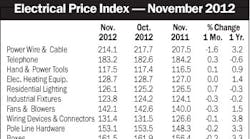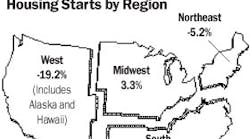Latest from Mag
Total housing starts remained virtually unchanged in January although single-family builders continued to pull in the reins on new-home production, according to newly released data from the U.S. Commerce Department. Starts rose by 0.8 percent for the month to a seasonally adjusted annual rate of 1.01 million units, with single-family production down 5.2 percent to a rate of 743,000 units and multifamily production – which tends to display significant month-to-month volatility – up 22.3 percent to a 269,000-unit rate that was still well below the previous quarterly average.
“Single-family builders in our latest surveys have indicated that improving affordability factors and the large selection of homes on the market are helping draw more potential buyers to model homes in recent weeks,” said NAHB Chief Economist David Seiders.
“However, until that increased traffic of prospective buyers translates to higher home sales and significantly lower inventories, builders are doing the responsible thing to bring supply and demand back into alignment by keeping the brakes on new construction.”
Single-family housing starts, at 743,000 units, declined for a tenth consecutive month to their lowest rate since January of 1991. Single-family permit issuance was also at its lowest since January of 1991, at 673,000 units.
Overall permit issuance, which can be an indicator of future building activity, declined 3 percent in January to a seasonally adjusted annual rate of 1.05 million units. This was the lowest overall permit issuance since November of 1991. Single-family permits were down 4.1 percent, while multifamily permits were virtually unchanged for the month at 375,000 units.
Regionally, overall housing starts were mixed in January, with the two largest housing markets — the South and West — posting declines of 2.9 percent and 6.2 percent, respectively, and the two others — the Northeast and Midwest — each partially offsetting previous big declines in their territories with gains of 18.9 percent and 12 percent, respectively.

